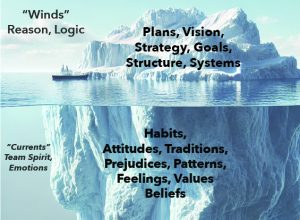In this video from the NASCIO conference, discover how a group of Northeastern students revolutionized state innovation with AI, creating tools that impressed leaders and landed them top jobs—all while transforming the workforce pipeline. Watch the video to see how Massachusetts is building an AI Center of Excellence and fostering a culture of learning to tackle tomorrow’s challenges today. It’s a game-changer for innovation and talent!
Category: Uncategorized
7 Steps to Design the Life You Want:
1 – Prioritize Your Health
Take time to think deeply
Lift weights
Morning sun
8 hours sleep
No energy vampires
Express gratitude daily
2. Take Control of Your Future
Make good decision
Unfocused -> Run/Exercise
Uninspired -> Read
Upset -> Breathe
Burned out -> Seek nature
Tired -> Go for a walk
Craft a Compelling Vision
What are your 10 year goals?
What are your 3 year goals?
What are your 1 year goals?
What are your 90 day goals?
What are your goals this week?
What is your mission?
What is your purpose?
What is your vacation?
What is your passion?
Take Massive Action
Don’t be paralyzed by analysis paralysis. Focus on decision velocity.
No excuses
Do hard things
Embrace discomfort
When in doubt, execute
Take extreme ownership over life
Surround yourself with A-players
Choose Play & Adventure
“Most men die at 27, we just bury them at 72” —Mark Twain
Choose nature
Choose road trips
Choose to be a kid
Choose wild adventures
Choose spontaneous nights
5 Interview Tips from a Manager at Amazon
STAR or CAAR
Context >
Approach 1 – Your Playbook
Approach 2 – Depth
Result
- Build a Story Book – Create a library of stories. Use CAAR format. Bias towards recent stories, but don’t shy away from older stories if they convey your skill and capabilities.
- Mistakes Level You Don’t use trivial examples – Mistakes indicate experience – breaking a build is a minor issue
- Audit Stories for Clarity – Ask for feedback. Practice. Don’t confuse the interviewer.
- Specificity Matters – Be specific about what you did. Numbers build trust. “Reduced wait times by 4 hours!”
- Don’t use we statements – Use I not we
Thoughts on Leading Teams
Leadership is about setting priorities and then exemplifying the behaviors that you want to see in other people.
Make the charitable assumption
49% technical skill and 51% emotional skill
Hire for these traits:
-
Optimistic warmth (genuine kindness, thoughtfulness, and a sense that the glass is always at least half full)
-
Intellectual Curiosity (not just “smarts” but rather an insatiable curiosity to learn for the sake of learning)
-
Work ethic (a natural tendency to do something as well as it can possibly be done)
-
Empathy (an awareness of, care for, and connection to how others feel and how your actions make others feel)
-
Self-awareness and integrity (an understanding of what makes you tick and a natural inclination to be accountable for doing the right thing with honesty and superb judgment)
Communicating has as much to do with context as it does content. That’s called setting the table. Understanding who needs to know what, when people need to know it, and why, and then presenting that information in an entirely comprehensible way is a sine qua non of great leadership. Clear, timely communication is the key to applying constant, gentle pressure.
Great storytelling connects employees to their work. It involves using concrete examples that reframe a moment by personifying human consequences. People’s feelings about their work are only partly about the work itself. They are equally, if not more so, about how they frame their work. Do they see what they’re doing as a mindless ritual? Do they see it as empty compliance? Or do they see it as sacred duty? If you change the frame you change the feeling. And nothing changes frames faster than a story.
Wow. My First Reaction to NotebookLM by Google
 In the ever-evolving world of artificial intelligence, Google has introduced a tool that reimagines how we interact with information: NotebookLM. While many AI tools focus on flashy features or complex applications, NotebookLM is all about practicality, making it a game-changer for anyone who deals with large amounts of information—whether you’re a student, researcher, or professional.
In the ever-evolving world of artificial intelligence, Google has introduced a tool that reimagines how we interact with information: NotebookLM. While many AI tools focus on flashy features or complex applications, NotebookLM is all about practicality, making it a game-changer for anyone who deals with large amounts of information—whether you’re a student, researcher, or professional.
Here’s the Wow Factor
With NotebookLM, you can turn a document into a podcast. I took the text of a presentation “0 to 90 in AI,” and created the audio. Judge for yourself!
What is NotebookLM?
NotebookLM, short for “Language Model,” is an AI-powered tool designed to help you manage and navigate through your personal notes, documents, and information resources. Think of it as a supercharged personal assistant that not only stores your notes but also understands them, helping you find connections, generate summaries, and even answer questions based on your content.
How Does NotebookLM Work?
Imagine you’ve been collecting notes on various AI topics for months. You have documents on machine learning, data ethics, neural networks, and more. Traditionally, finding specific details or cross-referencing ideas would be time-consuming and, frankly, frustrating. NotebookLM changes this dynamic by using AI to read and comprehend your documents, allowing you to ask it questions like, “What’s the difference between supervised and unsupervised learning?” or “Summarize the key points on data ethics from all my notes.” The AI sifts through your materials and gives you coherent, concise answers, saving you hours of manual searching.
7 Key Behaviors of Great Team Leadership
7 Key Behaviors of Great Team Leadership
In today’s competitive business environment, effective team leadership is crucial for success. Drawing insights from the world of professional sports, particularly the experiences of legendary quarterback Tom Brady, we can identify seven key behaviors that set great team leaders apart:
1. Put the Team First, Always
Great leaders prioritize team success over personal accolades. They support their teammates, even when facing personal adversity or disappointment. This behavior fosters a culture of unity and shared purpose.
2. Show Appreciation for Unsung Heroes
Effective leaders recognize and appreciate the contributions of all team members, especially those in less visible roles. This approach ensures everyone feels valued and motivated to give their best effort.
3. Set High Standards and Create a Culture of 100% Effort
Leaders should establish and maintain high standards of performance. By modeling exceptional work ethic and holding themselves and others accountable, they create a culture where giving 100% effort becomes the norm.
4. Recognize Individual Psychology and Motivations
Great leaders understand that each team member is unique and is motivated by different factors. They take the time to learn what drives each individual and tailor their leadership approach accordingly.
5. Complement the Formal Leader’s Style
In organizations with a strong formal leader (like a CEO or head coach), effective team leaders adapt their style to complement the formal leader’s approach. This creates a balanced leadership dynamic that benefits the entire team.
6. Counteract External Forces That Promote Selfish Behavior
Leaders must be aware of external pressures that can lead team members to prioritize personal interests over team goals. By consistently reinforcing the team-first message, they help mitigate these influences.
7. Create Opportunities to Connect Outside the Office
Building relationships and trust through shared experiences outside of work is crucial. These connections foster stronger bonds among team members, leading to better communication and performance when it matters most.
By embodying these seven behaviors, leaders can significantly enhance team cohesion, motivation, and overall performance. Remember, great leadership isn’t just about individual brilliance—it’s about bringing out the best in everyone around you and working together towards a common goal.
How to Ensure a Successful IT Project – It’s not Technology!
Some of the most successful projects I have seen were the ones that invest in managing the impact of change on people. Along with a significant financial commitment, leaders need to invest emotionally in “engagement” communications. Engagement communications raise awareness, calm fears, and develop a desire for new skills and capabilities to support people emotionally during the implementation phase.
Awareness through Measurement
What you measure you can manage. Awareness through measurement creates new consciousness. Data and information answer our questions about why, what, and how.
Knowing what is happening in the organization is the first step down the road to success. Think about an iceberg as a metaphor.

Above the water leaders create a vision, strategy, and even tactical plans. This is a comfortable place to work because it’s rational and tangible. Decisions are based on fact and reasoning. This is where leaders like to work.
Managers and employees responsible for fulfilling that mission are below the water, focused on the operations and efficient functioning of systems and processes. The cultural element is there, below the surface. It’s made up of habits, traditions, attitudes, prejudices, patterns, feelings, beliefs, and values. Intangible? Hard to see? Yes, but they have a huge impact on how things get done.
What sunk the Titanic was not above the water. “Culture eats strategy for breakfast” is an apt description of the power of cultural currents and their impact on strategic initiatives.
What drives performance is below the surface. How people do things, the management style, and the way decisions are made all happen here.
Think, if you want to move an iceberg, where would you apply pressure? Under the surface. It’s the same with organizations. What drives performance is not what is above the surface but below, the currents of emotions, team spirit, and the culture.
The challenge with culture is how does a leader manage to measure the intangible elements beneath the surface? How to discern the level of emotional uncertainty and fear in letting go of processes that brought them success?
It is far more difficult to change culture than it is to develop a strategy and to see it carried out.